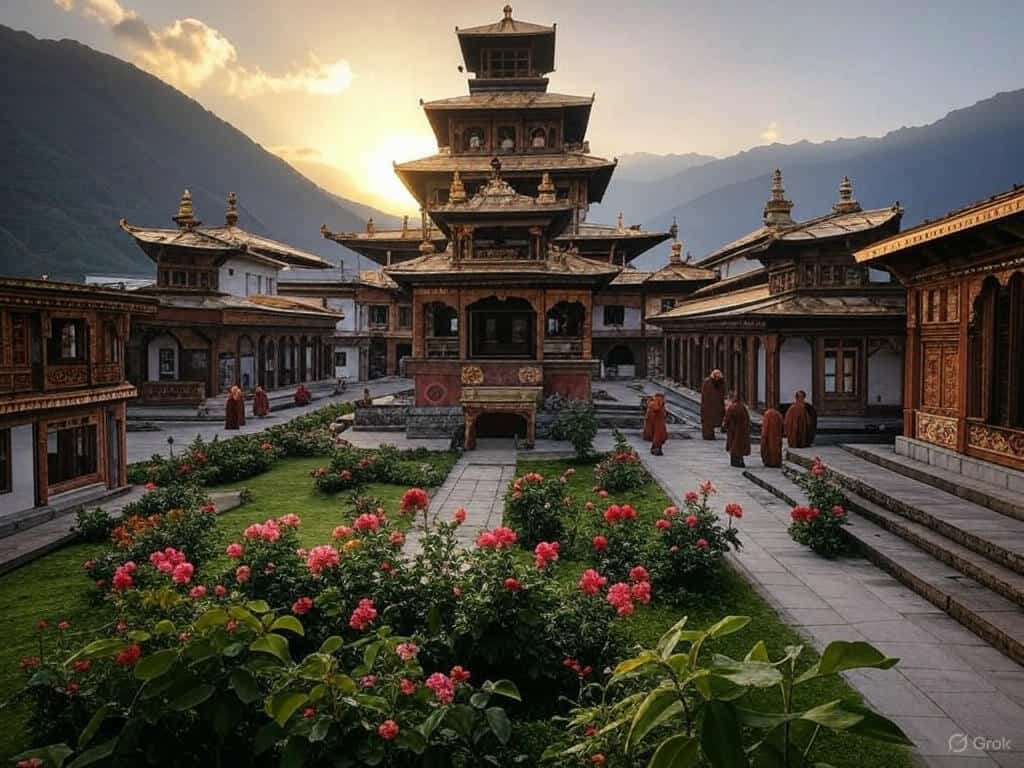The Himalayan region of India, stretching across states like Himachal Pradesh, Uttarakhand, Sikkim, and Ladakh, is home to some of the world’s most breathtaking monasteries. Perched on rugged cliffs, nestled in serene valleys, or overlooking snow-capped peaks, these Himalayan monasteries are not just spiritual retreats but architectural marvels steeped in Buddhist and Hindu traditions. From ancient gompas in Spiti to vibrant prayer halls in Sikkim, they offer a glimpse into centuries-old cultures and unparalleled natural beauty. In this comprehensive guide, we’ll explore the most beautiful monasteries in the Himalayan region, their significance, and why they’re must-visit destinations in 2025.
The Himalayan Monasteries: A Legacy of Faith and Resilience
The Himalayas have long been a cradle of spirituality, attracting monks, sages, and pilgrims seeking enlightenment amidst their towering peaks. Influenced by Tibetan Buddhism, Hinduism, and Bon traditions, these monasteries date back centuries, some founded as early as the 8th century. Built with stone, wood, and mud, they withstand harsh climates while serving as centers of learning, meditation, and community life. Their remote locations—often at altitudes exceeding 3,000 meters—enhance their mystique, offering solitude and stunning vistas that draw travelers from around the globe.
Why Visit Himalayan Monasteries?
Architectural Splendor
Himalayan monasteries showcase unique designs—fortress-like gompas with whitewashed walls, colorful murals, and golden spires. Their rugged exteriors belie interiors rich with thangka paintings, ancient scriptures, and intricate statues, reflecting a blend of art and devotion.
Spiritual Serenity
These sacred spaces resonate with the chants of monks, the flutter of prayer flags, and the hum of prayer wheels. Whether you’re a seeker or a curious traveler, their tranquil ambiance offers a profound escape from modern life.
Himalayan Backdrops
Per rivet the monasteries’ locations—perched on cliffs, overlooking valleys, or surrounded by peaks like Nanda Devi, Kangchenjunga, and Annapurna—provide jaw-dropping views that elevate their allure, making them as much a visual feast as a spiritual one.
Top Beautiful Monasteries in the Himalayan Region
1. Key Monastery (Himachal Pradesh)

- Location: 12 km from Kaza, Spiti Valley, at 4,166 meters.
- Why Visit: India’s largest monastery in Spiti, Key Gompa (11th century) clings to a hilltop, offering panoramic views of the Spiti River and barren peaks. Its labyrinthine rooms house rare Buddhist manuscripts, weapons, and musical instruments.
- Highlight: The annual Chaam festival with masked dances.
2. Tabo Monastery (Himachal Pradesh)
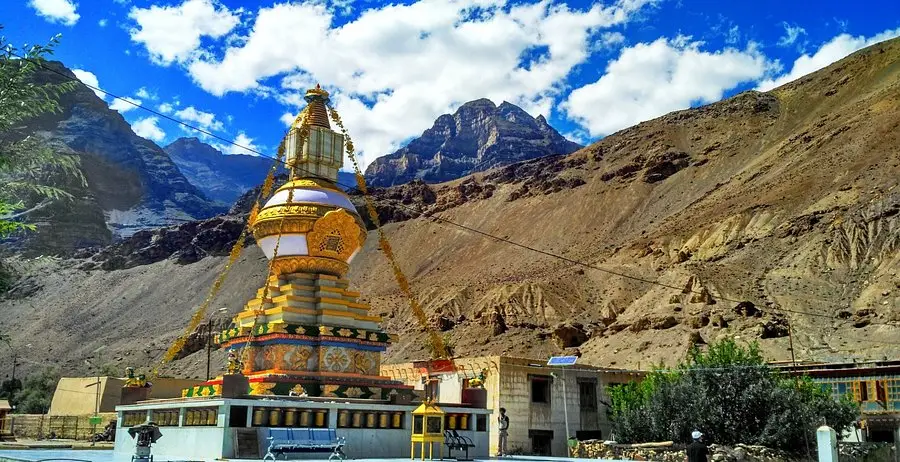
- Location: Tabo village, Spiti Valley, at 3,280 meters.
- Why Visit: Known as the “Ajanta of the Himalayas,” this 10th-century mud-brick gompa features ancient frescoes and stucco statues, earning UNESCO recognition. Its nine temples glow with history.
- Highlight: The serene meditation caves nearby.
3. Hemis Monastery (Ladakh)
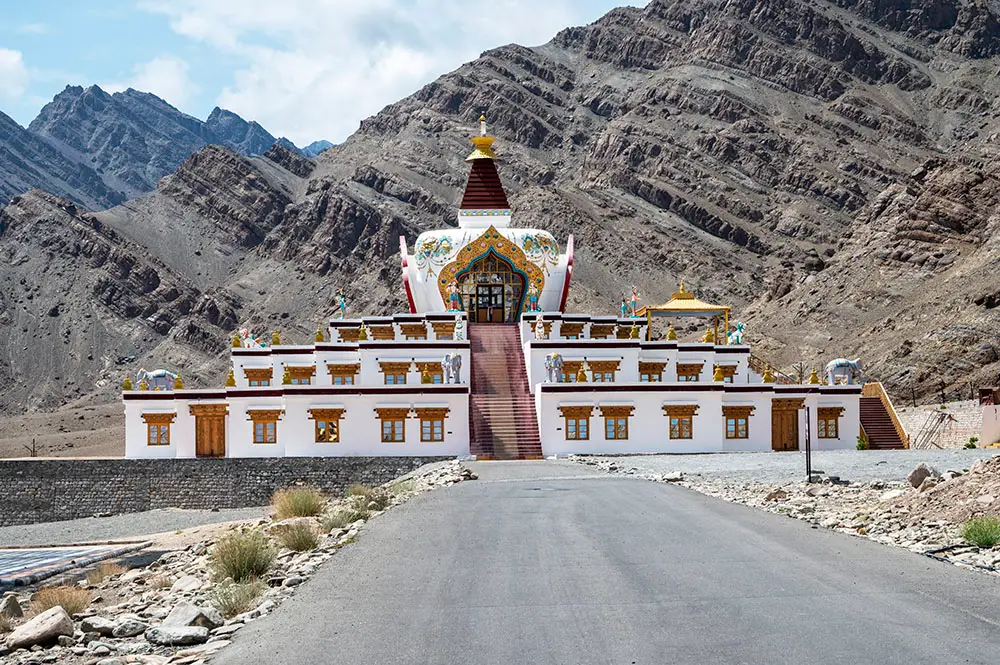
- Location: 45 km from Leh, at 3,520 meters.
- Why Visit: Ladakh’s largest and wealthiest monastery, Hemis (17th century) boasts a massive copper-gilded Buddha statue and vibrant thangkas. Its Hemis Festival celebrates Guru Padmasambhava with colorful dances.
- Highlight: The hidden meditation courtyard.
4. Rumtek Monastery (Sikkim)
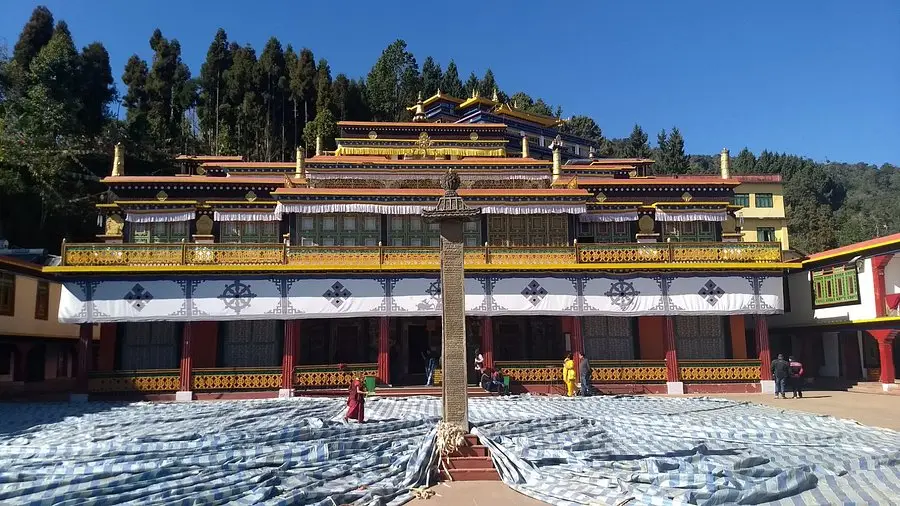
- Location: 24 km from Gangtok, at 1,500 meters.
- Why Visit: A 16th-century Karma Kagyu lineage seat, Rumtek dazzles with its golden stupa, intricate murals, and lush gardens. It’s a cultural hub amid misty hills.
- Highlight: The serene Karma Shri Nalanda Institute nearby.
5. Mindrolling Monastery (Uttarakhand)
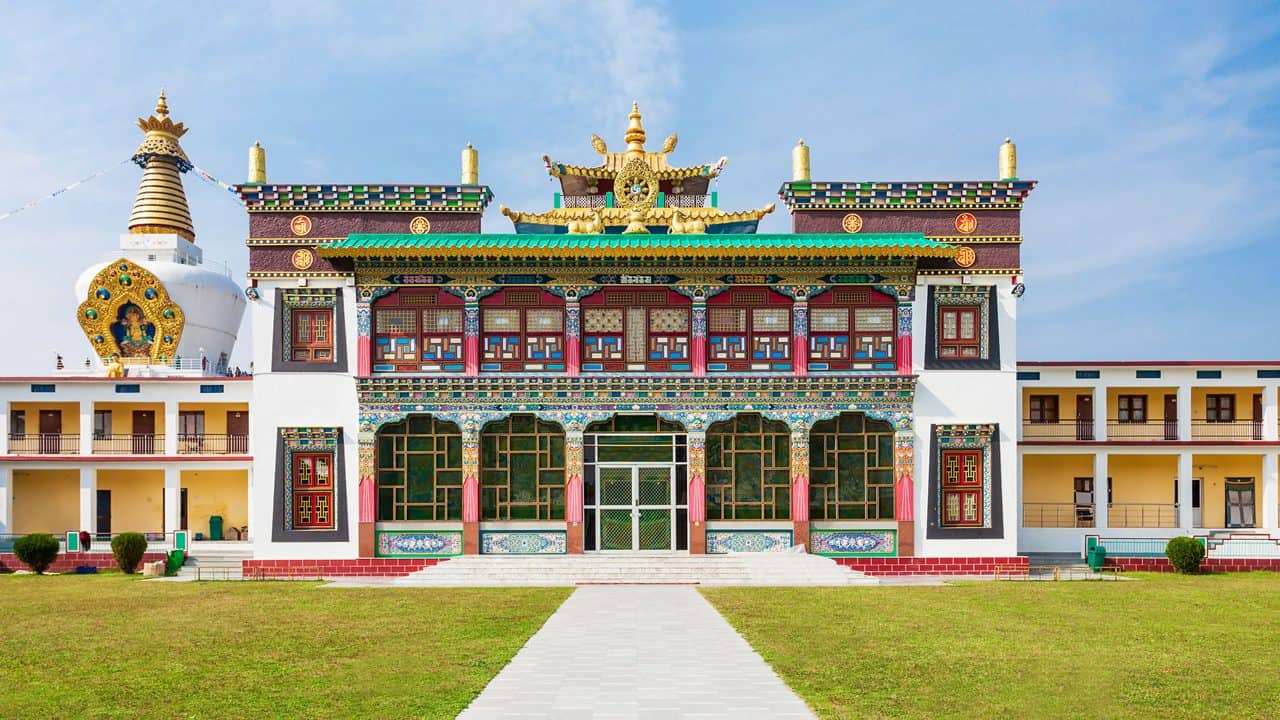
- Location: Clement Town, Dehradun, at 700 meters.
- Why Visit: Established in 1965, this Nyingma monastery features a 35-meter Great Stupa and a 57-meter Buddha statue, blending modern design with Himalayan tradition.
- Highlight: The vibrant prayer hall and manicured lawns.
6. Tawang Monastery (Arunachal Pradesh)

- Location: Tawang, at 3,048 meters.
- Why Visit: India’s second-largest monastery (17th century), Tawang overlooks the Tawang Valley with its massive prayer hall, golden Buddha, and colorful festivals.
- Highlight: The annual Torgya festival with monk dances.
Best Time to Visit Himalayan Monasteries
- May to June: Pleasant weather and clear skies across the region.
- September to October: Crisp air, post-monsoon clarity, and vibrant landscapes.
- Winter (November-March): Snow enhances beauty in higher altitudes (Spiti, Ladakh), though access may be limited.
- Festivals: Check monastery-specific events (e.g., Hemis Festival in June-July).
How to Reach Himalayan Monasteries
- By Air: Nearest airports vary—Bhuntar (Spiti), Leh (Ladakh), Bagdogra (Sikkim), Jolly Grant (Uttarakhand), Dibrugarh (Arunachal).
- By Train: Closest railheads include Chandigarh (Himachal), Kathgodam (Uttarakhand), New Jalpaiguri (Sikkim), and Jammu (Ladakh routes).
- By Road: Rugged drives via Manali, Shimla, Gangtok, or Guwahati; high-altitude passes (Rohtang, Kunzum) require 4×4 vehicles and permits in restricted areas.
Travel Tips for Visiting Himalayan Monasteries
- Permits: Foreigners need Inner Line Permits for Spiti, Ladakh, and Arunachal (apply online or via local authorities).
- Gear: Warm layers, sturdy shoes, sunglasses, and sunscreen for altitude and UV exposure.
- Altitude: Acclimatize at lower bases (e.g., Manali, Leh) to avoid AMS; carry Diamox.
- Etiquette: Dress modestly, remove shoes, and ask before photographing monks or interiors.
- Eco-Care: Avoid littering; respect sacred spaces and fragile ecosystems.
Why Himalayan Monasteries Captivate
These monasteries are more than religious sites—they’re living legacies of Himalayan culture, art, and resilience. Their remote perches, vibrant traditions, and jaw-dropping surroundings create an experience that’s spiritual, scenic, and unforgettable. Whether you seek peace, history, or adventure, they offer it all.The beautiful monasteries of the Himalayan region—from Key’s cliffside perch to Rumtek’s lush serenity—are treasures waiting to be discovered. They blend faith with nature’s grandeur, offering a journey for the soul and senses. Plan your pilgrimage, pack your spirit, and let these Himalayan sanctuaries inspire you.


